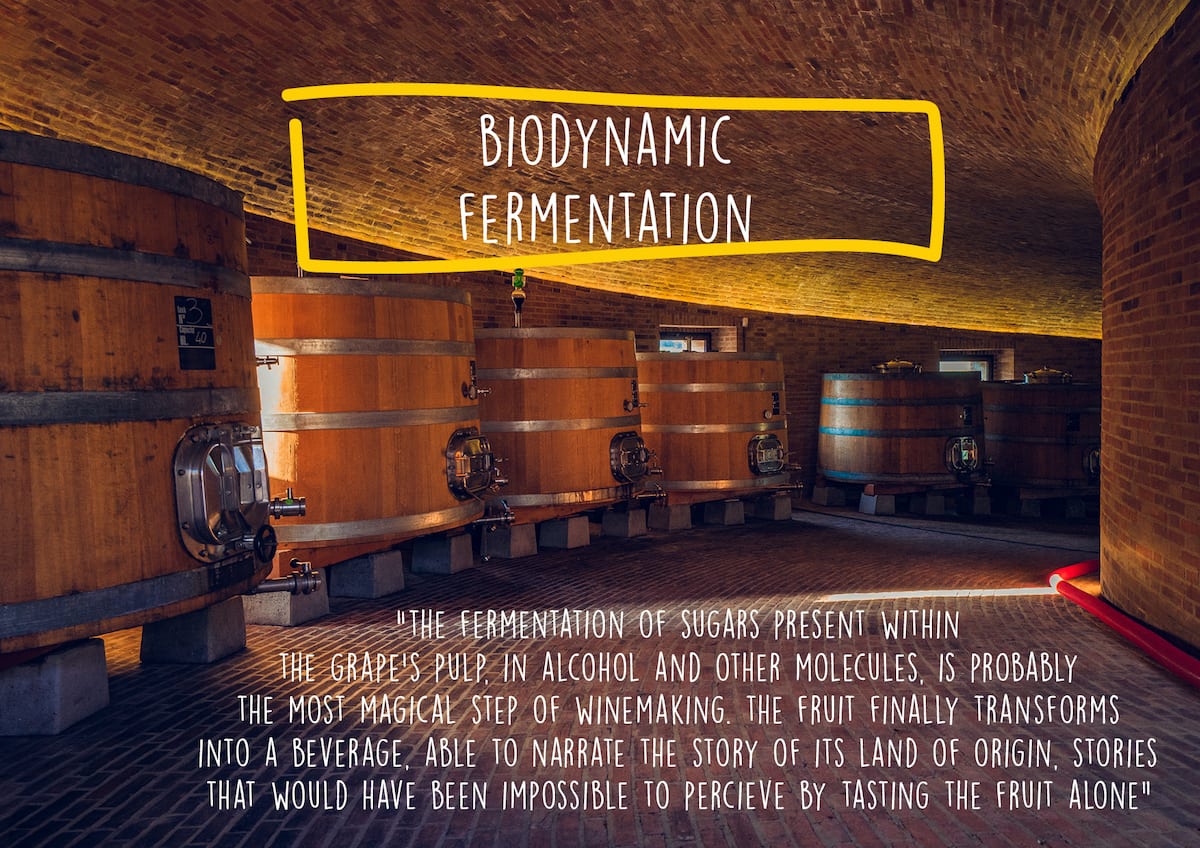
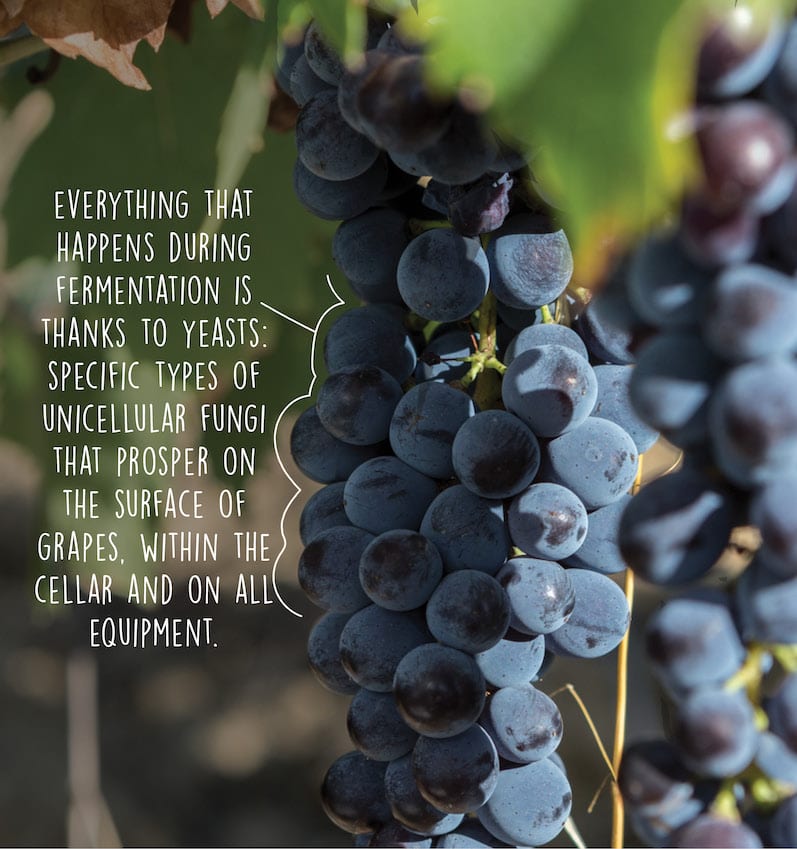
The yeast – or rather – the yeast colonies, are unique to each place, cellar and vineyard.
It is for this reason that at Podere Le Ripi we include indigenous yeasts as one of the elements that defines our terroir. Substituting the use of indigenous yeats with industrial ones, selected in a lab, that carry specific aromas and standardized characteristics would be like betraying the characteristics of the speicific vintage and of our terroir.
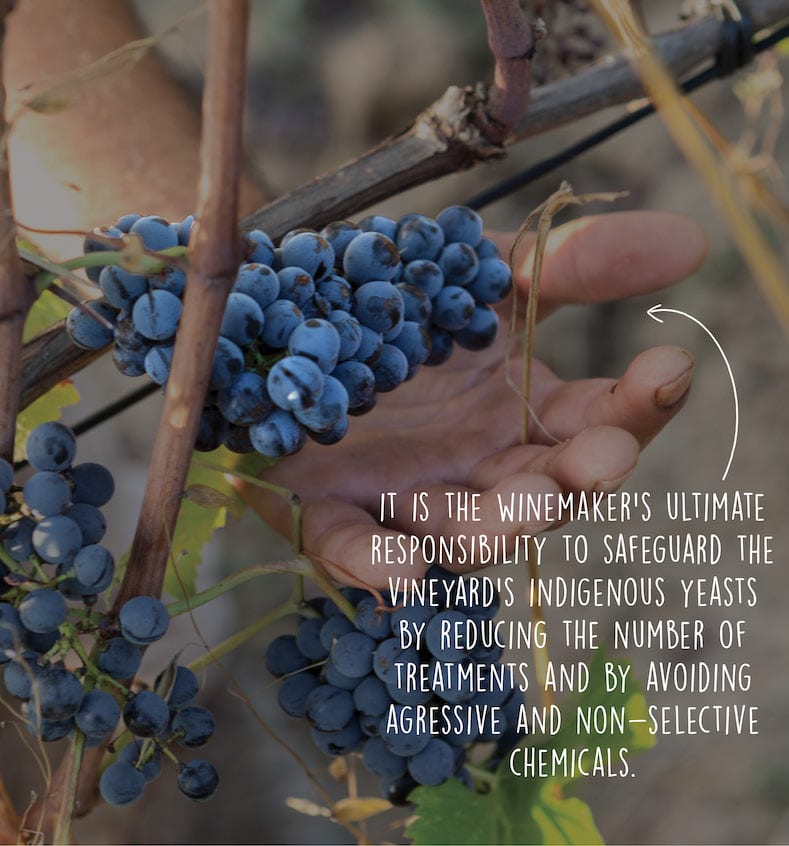
The yeasts that colonize the surface of grapes grow and develop also in regards to the climate and vintage characteristics, becoming a variable in the whole process of wine making. Unfortunately most treatments done in the vineyard, to protect the vines from parassite funghi also affect the yeats, which are fungi too (and so get damaged as well).
The yeast’s effect on the wine’s final outcome is just as significant as that of the vintage and winemaker!
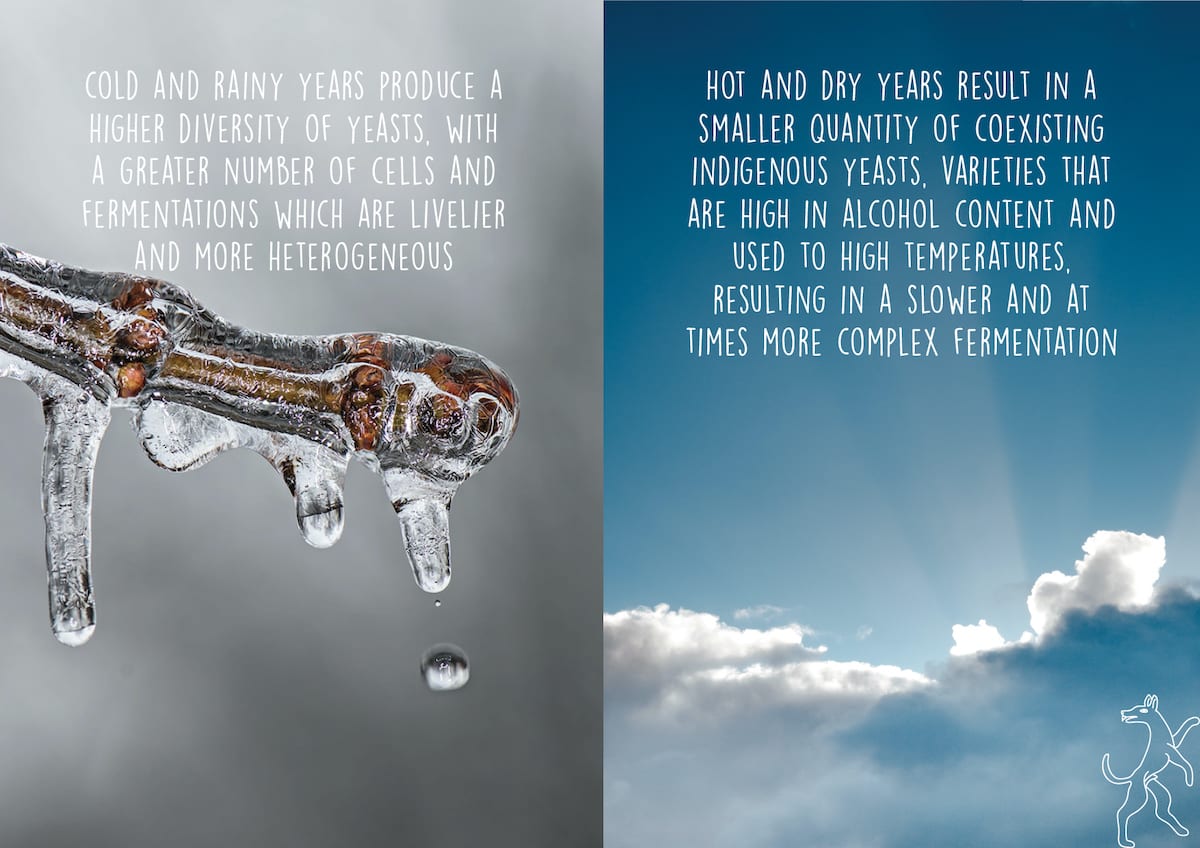
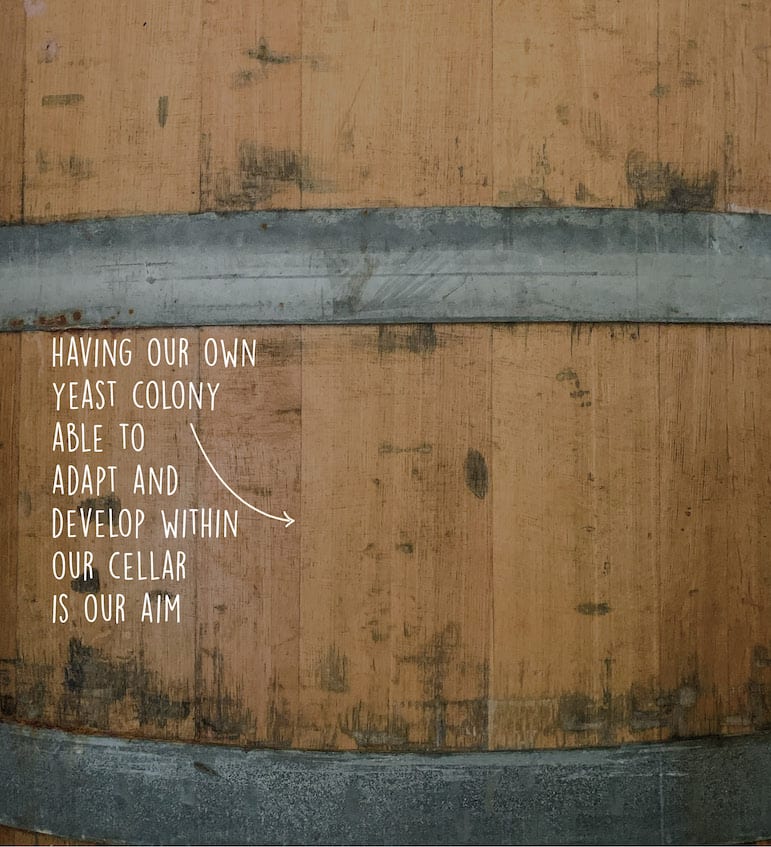
A natural, biodynamic fermentation occurs only thanks to yeasts present on the grapes and in the space itself. Although the process is slow and spontaneous, it is important that we don’t contaminate the cellar with other yeasts or agressive chemicals, but create a condition of humidity and temperature perfect for the development of the yeasts. Working with porous materials such as wood and clay bricks helps us in forming a substrate where the yeasts can colonize.
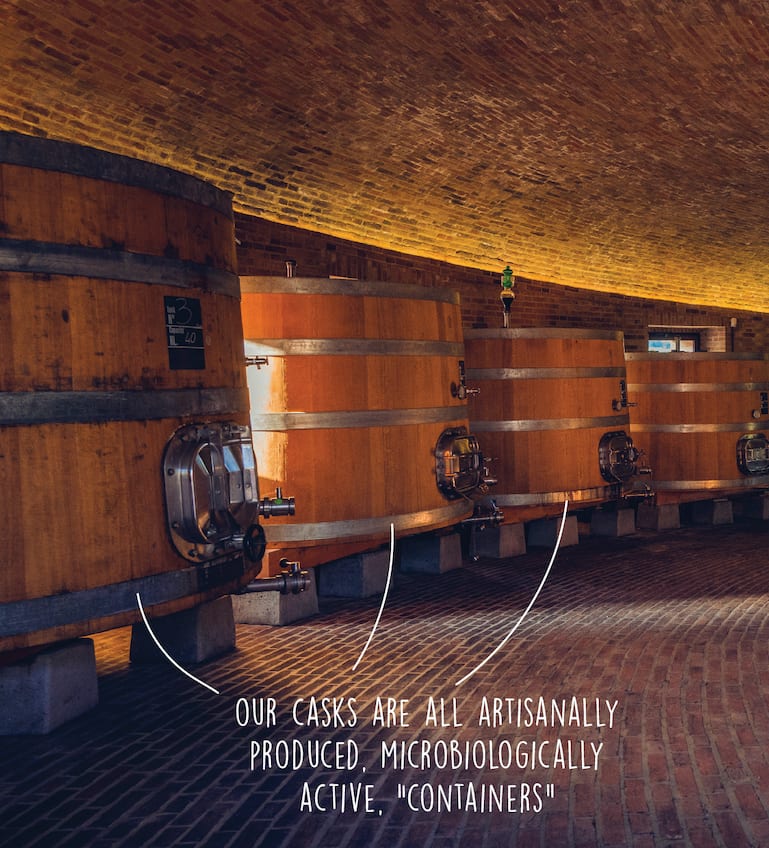
These were the basic ancient principles that were adopted in order to have an excellent working cellar, rich with yeasts and microorganisms.
Unfortunately the artisanal practice of making wine has given way to sterile industrialization, full of technology, where cellars look more like sterile labs instead of natural incubators of wine, a microbiologically active natural product in constant evolution.
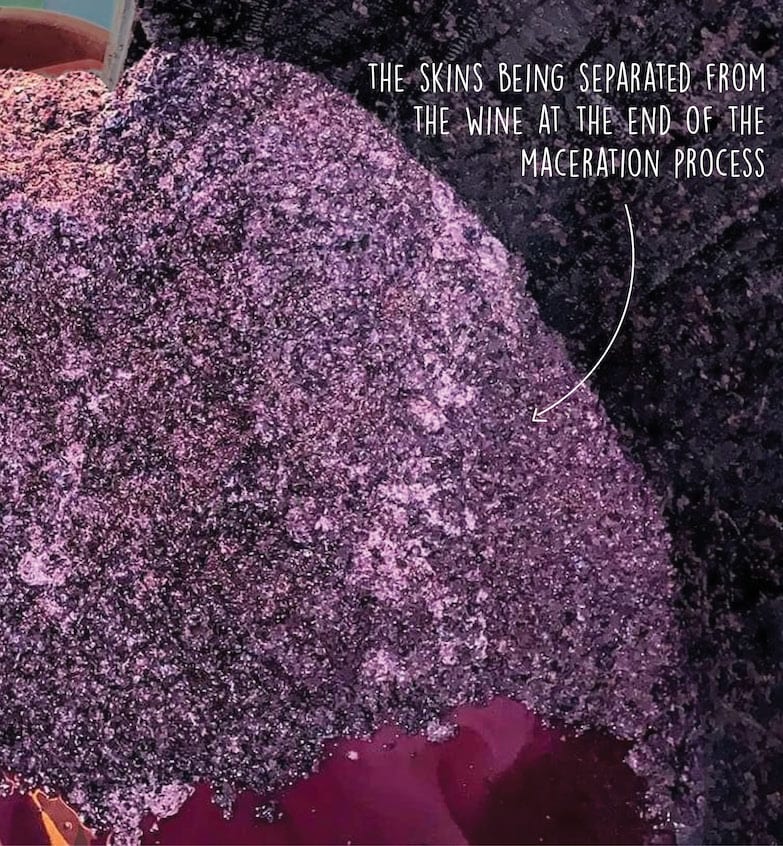
Spontaneous fermentation at Podere Le Ripi always occurs in wood (in open casks and tonneaux) and varies slightly every year.
It is always a slow and gradual process which needs to be comprehended and patiently accompanied without forcing or stressing it. This is why we sometimes have fermentations which last more than 40 days, where bacteria and yeasts often alternate each other throughout the microbiologic processes.
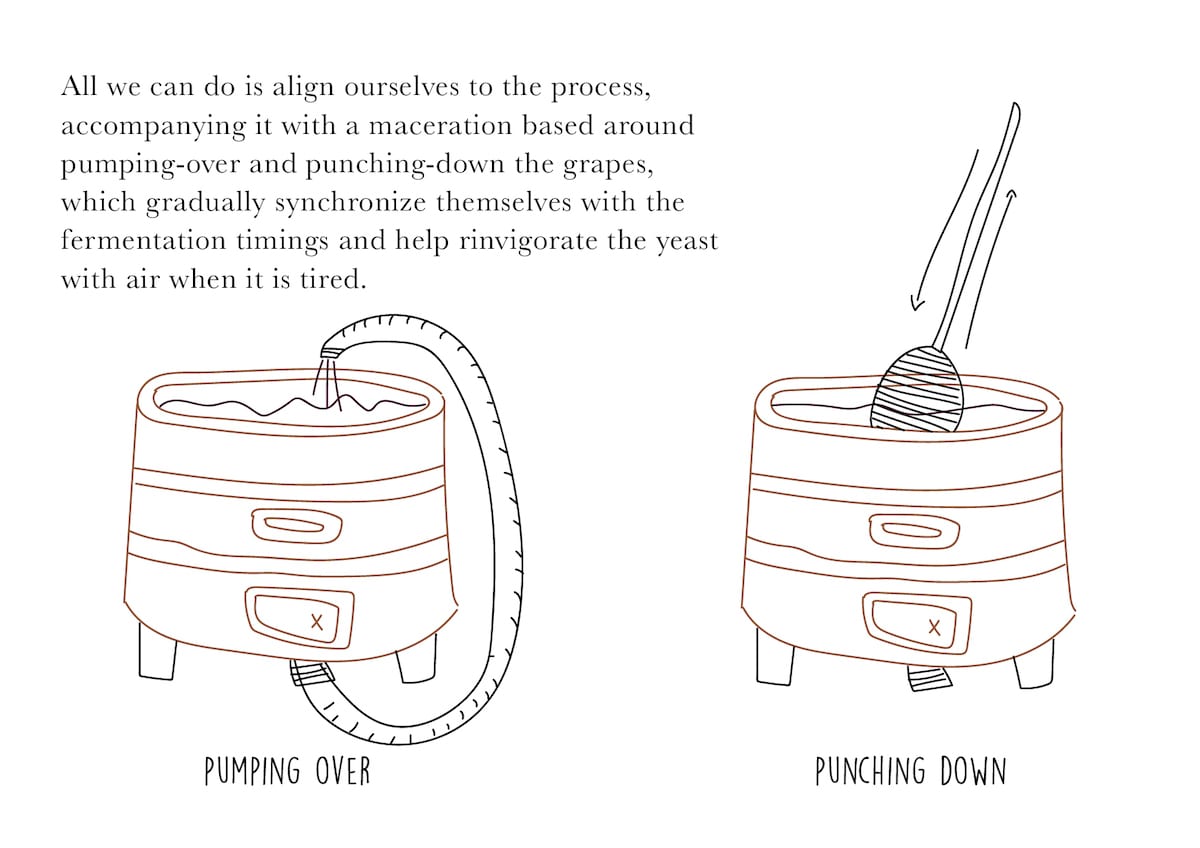
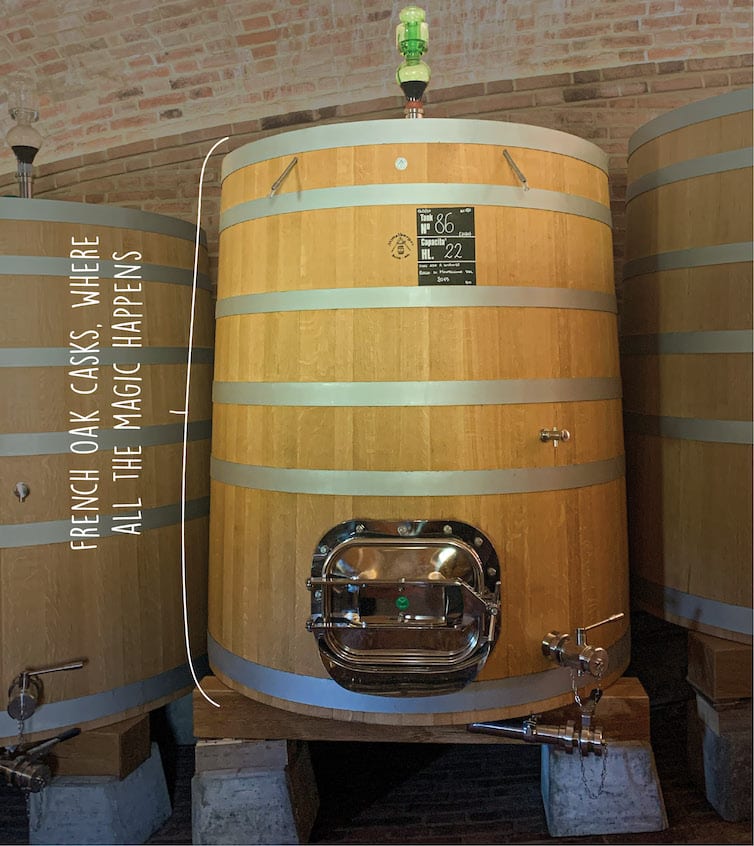
Once fermentation reaches the last 10 or so grams of sugar, we use a technique invented by us: infusing the wine in closed casks, a method created to accompany the final part of fermentation and maceration by keeping the top hat of skins submerged and full of CO2, whilst the yeasts, in absence of oxygen can complete their work in all calmness.
This phase can last from one to two months after harvest.
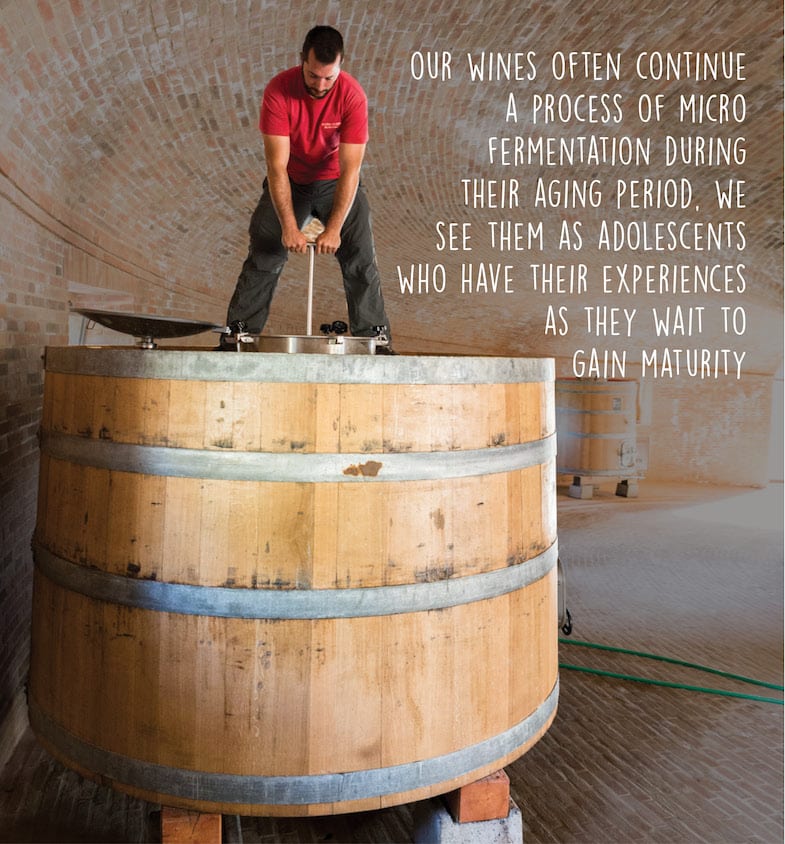
We don’t try and control microfermentation by standardizing or preventing their completion.
We believe that a wine’s energy is directly proportional to its microbiologic activity, so we prefer having micro fermentations which occur throughout the years rather than producing a wine that exhausts all the fermentation process in one month thanks to injections of selected yeasts and bacteria it received – to then spend the following years of aging totally inactive.
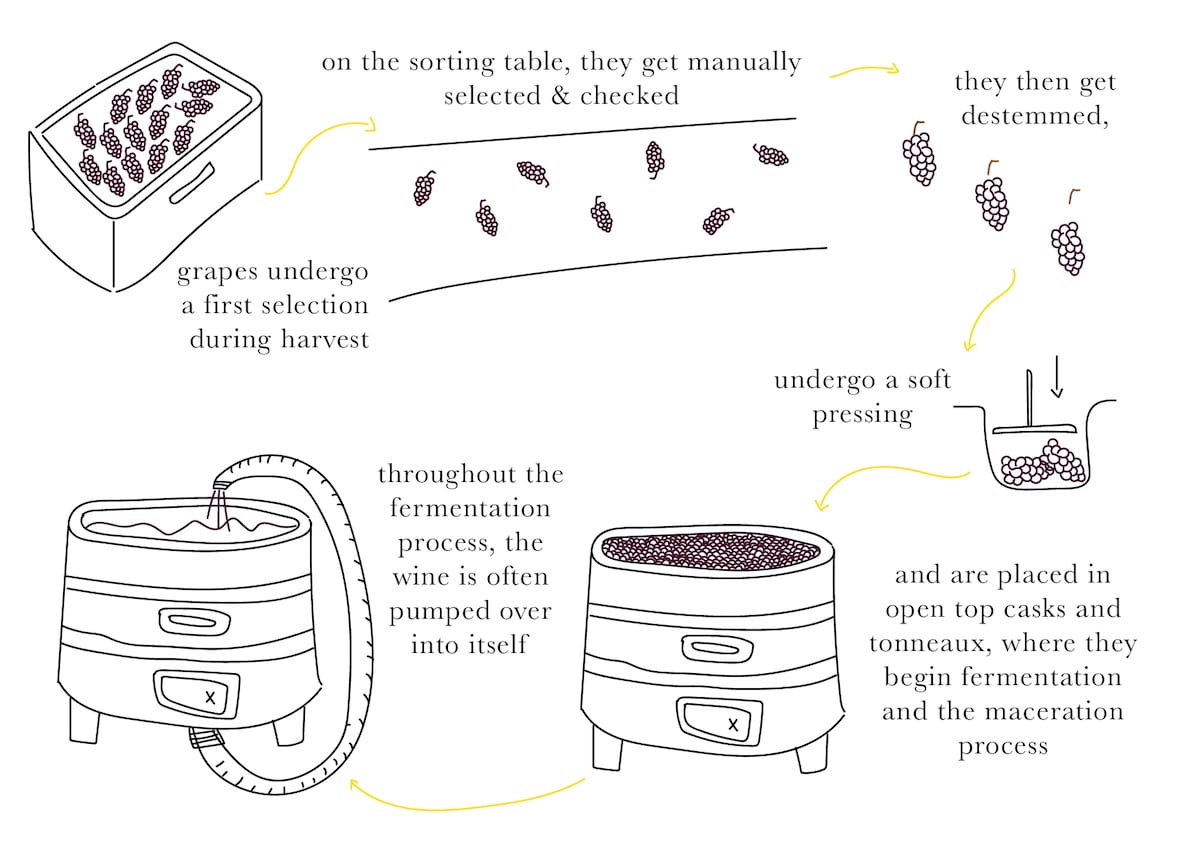
Book your visit
Fill the form and we will contact you soon!